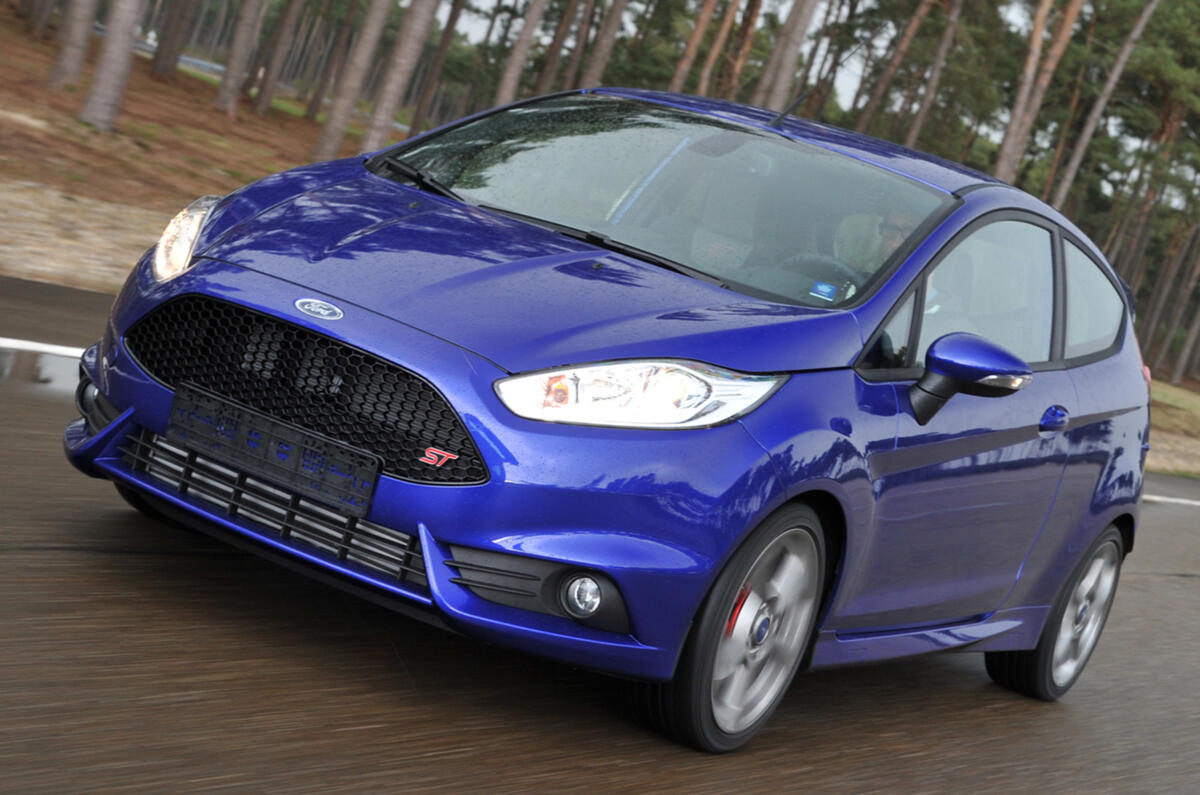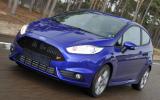What is it?
It’s the latest fast Ford, the Ford Fiesta ST. The new ST is first production Fiesta to reach 62mph from rest in under seven seconds, which makes it sound particularly sprightly.
As well it might: it has 179bhp, which, although around 10 per cent less than the class’s fastest, should prove sufficient in a four-metre supermini that will weigh around 1100kg (official kerbweight hasn’t been released at the time of writing).
That power output – strong but not outstanding – should give you an idea of where Ford intends the Ford Fiesta ST to sit in its range.
Unlike Renault or Peugeot, Ford doesn’t have one sporting line, it has ST and RS badges to use, with ST the daily drivers and RS the hardcore models. So, like the latest Focus ST, the Fiesta is meant to be enjoyable but not uncomfortable, fast but docile.
It costs from under £17,000 and is available in two trim levels – ST1 and ST2, imaginatively, with the latter £1000 more expensive and adding heated, part leather seats, DAB radio and a few other extras.
Power comes from a 1.6-litre turbocharged four-pot and drives the front wheels through a six-speed manual gearbox. There’s no flappy paddle option, and neither is there a mechanical limited-slip differential – the preserve of RS models, you feel.
Instead, the Ford Fiesta gets Torque Vectoring Control, an extension of the stability control that brakes a spinning inside wheel, replicating some of the effects of an LSD.
Suspension is 15mm lower than regular Fiestas, spring and damper rates are appropriately a mite stiffer, as is the rear torsion beam, while there are 17-in alloys wearing 205/40 Bridgestone Potenza all round.
The power steering is electrically assisted, and is a different, faster (2.4 turns) rack than on regular Fiestas, though remains linear: unlike a Servotronic, system it doesn’t get faster as you wind on more lock to increase agility.
































Join the debate
Add your comment
Great car, naff styling
Sounds like a great car, but I couldn't live with the looks. The rear diffuser is naff naff naff, the grill reminiscent of the 07 series Peugeots and the front bumper is too try hard. Do we really need an ST logo on the seats? The centre consol is tragic and there is no cruise control (even as an option!). All of which is a shame because it sounds like a belter to drive, great engine, fabulous chassis and steering which is as good as electric set-ups get. Now pass me that 208 brochure.
Lost my sale
I'm in the market for a new hot supermini and love everything about this car but, Ford have lost my purchase.
Considering this is supposed to be the top of the range (for now) everyday sporting Fiesta, to not offer cruise control even as a cost option (and yet make it standard on the titanium-x!!) is unforgivable...
Nearly new Citroen DS3-R here I come.....
What's all this "thankfully only with manual transmission?"
Won't sell here unless automatic - we've advanced past the caveman phase here, why we've even got electricity now!
You weren't sorry when the driver no longer had to advance/retard the ignition or when the manual choke disappeared. I believe that with some cars you can even lock/unlock without putting some tiny piece of metal in a hole in the door. So why, oh why, would you want 3 pedals when you've only got 2 feet?
The world will be a better place when the last manual leaves the production line (7 years time, or so, due to fuel economy requirements) and manufacturers can no longer pretend it costs $2500 more to build an auto, when it's almost certainly cheaper.
Haha
Because cars with automatic gearboxes are less fun to drive than cars with a proper slick manual!